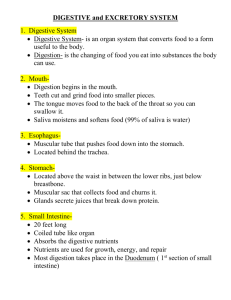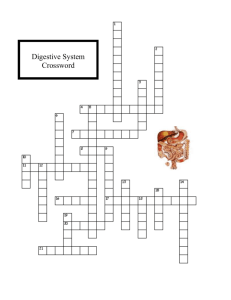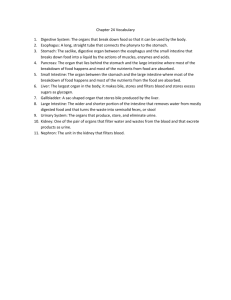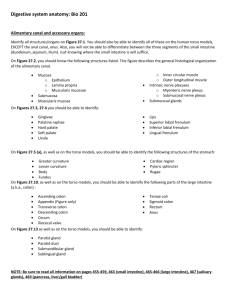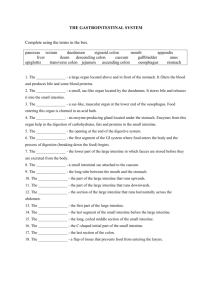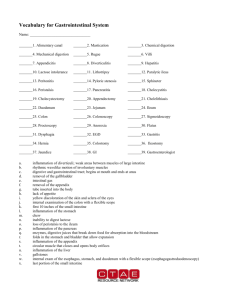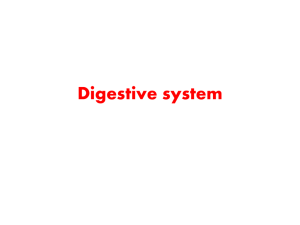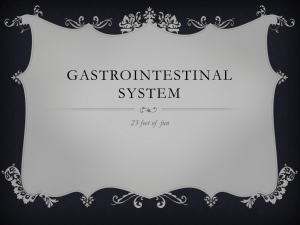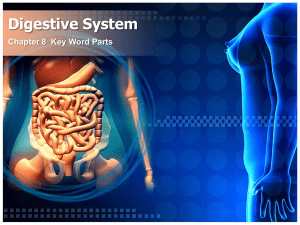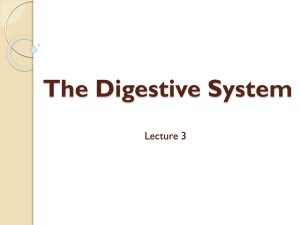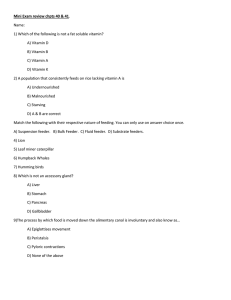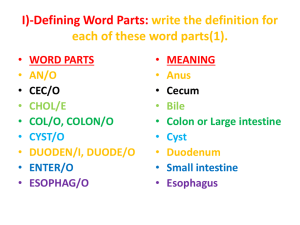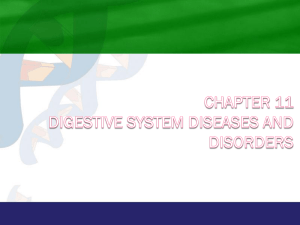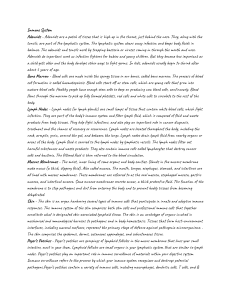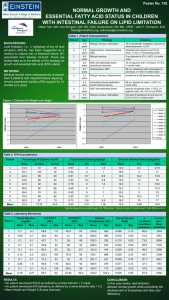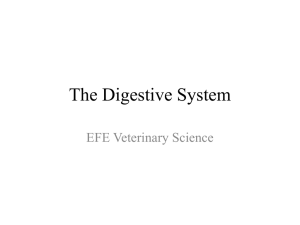Digestion Labels
advertisement
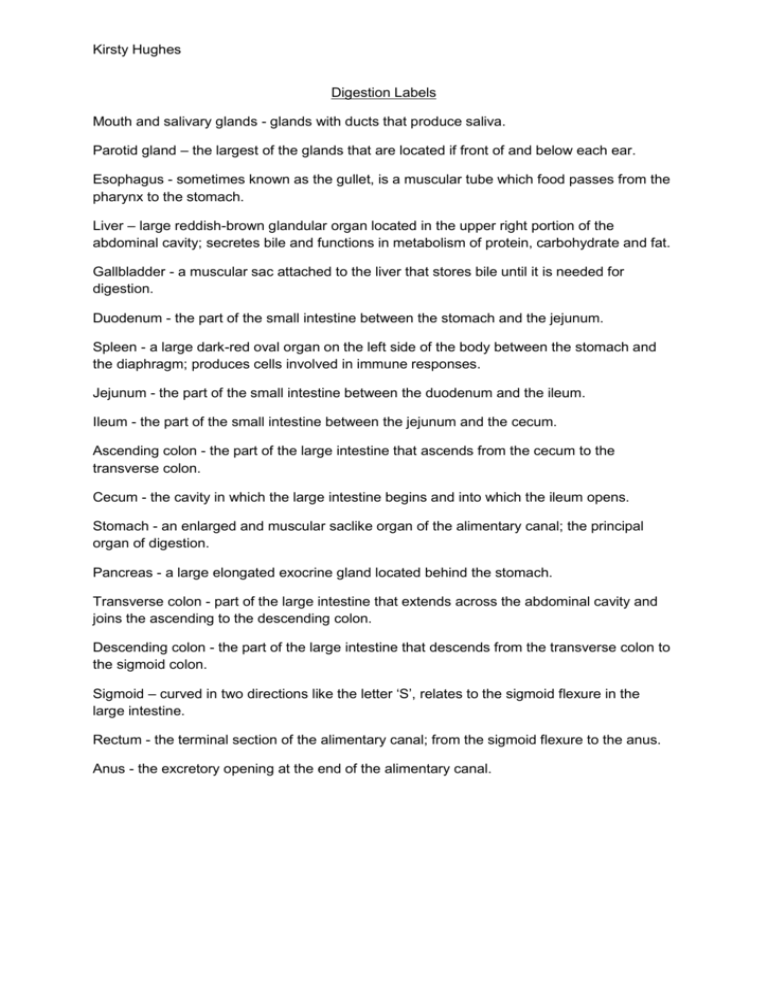
Kirsty Hughes Digestion Labels Mouth and salivary glands - glands with ducts that produce saliva. Parotid gland – the largest of the glands that are located if front of and below each ear. Esophagus - sometimes known as the gullet, is a muscular tube which food passes from the pharynx to the stomach. Liver – large reddish-brown glandular organ located in the upper right portion of the abdominal cavity; secretes bile and functions in metabolism of protein, carbohydrate and fat. Gallbladder - a muscular sac attached to the liver that stores bile until it is needed for digestion. Duodenum - the part of the small intestine between the stomach and the jejunum. Spleen - a large dark-red oval organ on the left side of the body between the stomach and the diaphragm; produces cells involved in immune responses. Jejunum - the part of the small intestine between the duodenum and the ileum. Ileum - the part of the small intestine between the jejunum and the cecum. Ascending colon - the part of the large intestine that ascends from the cecum to the transverse colon. Cecum - the cavity in which the large intestine begins and into which the ileum opens. Stomach - an enlarged and muscular saclike organ of the alimentary canal; the principal organ of digestion. Pancreas - a large elongated exocrine gland located behind the stomach. Transverse colon - part of the large intestine that extends across the abdominal cavity and joins the ascending to the descending colon. Descending colon - the part of the large intestine that descends from the transverse colon to the sigmoid colon. Sigmoid – curved in two directions like the letter ‘S’, relates to the sigmoid flexure in the large intestine. Rectum - the terminal section of the alimentary canal; from the sigmoid flexure to the anus. Anus - the excretory opening at the end of the alimentary canal.




